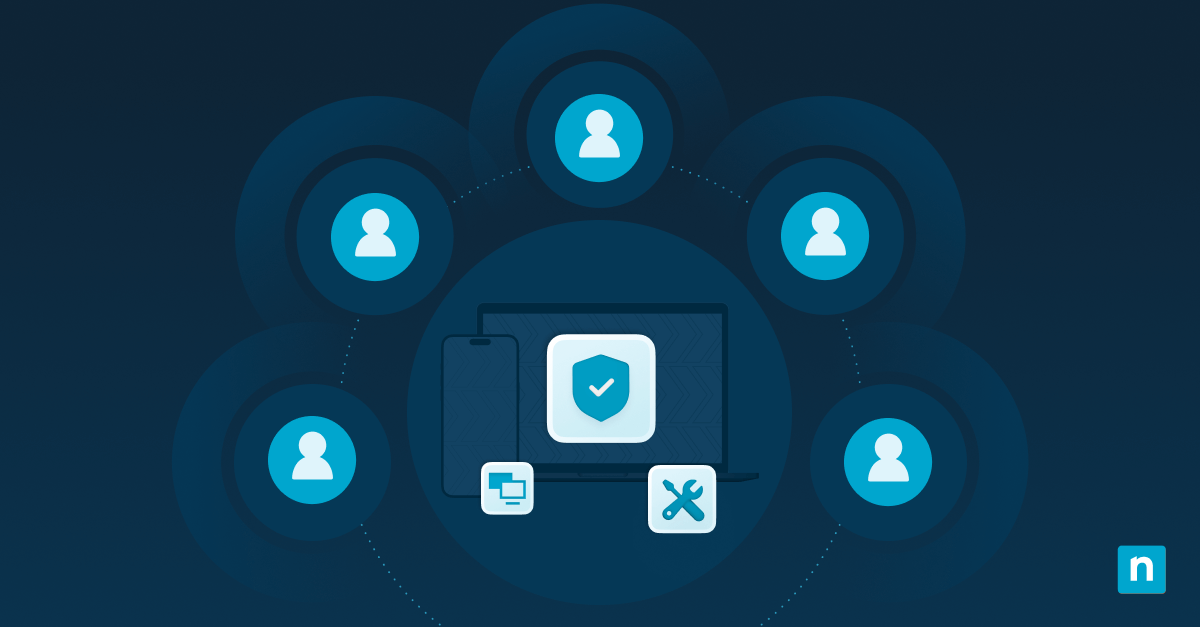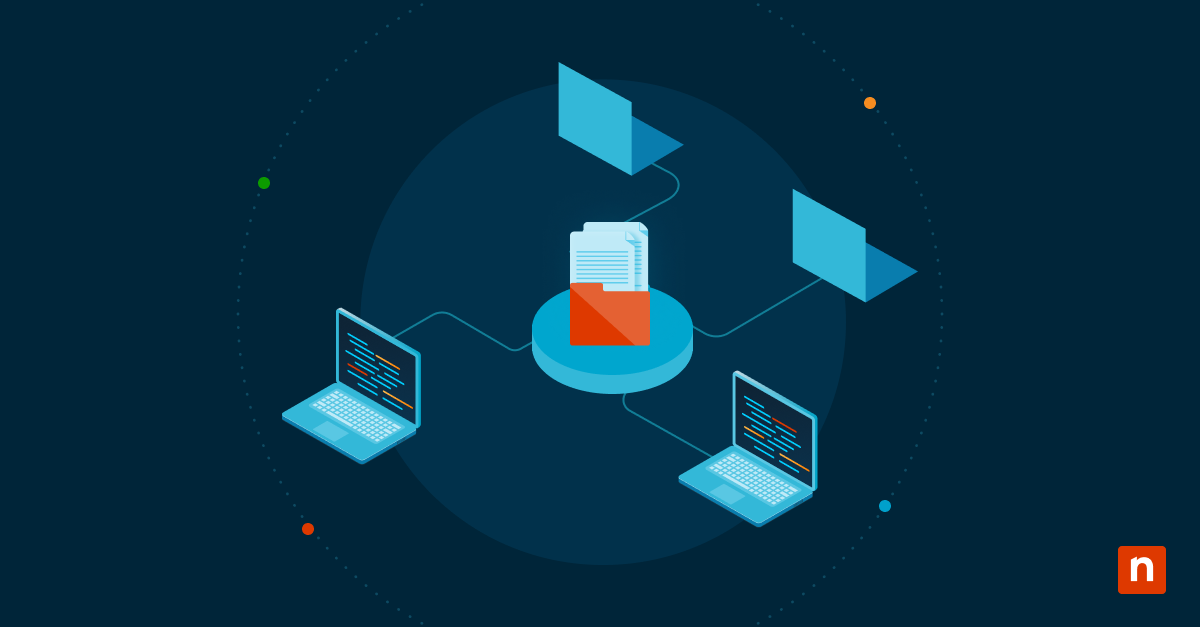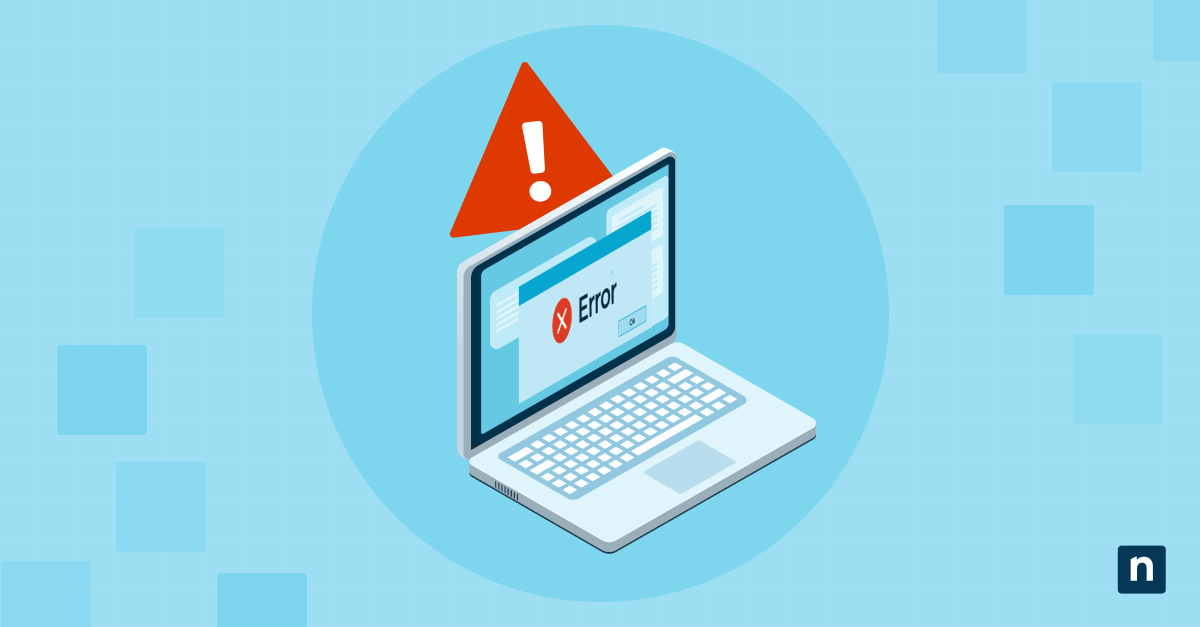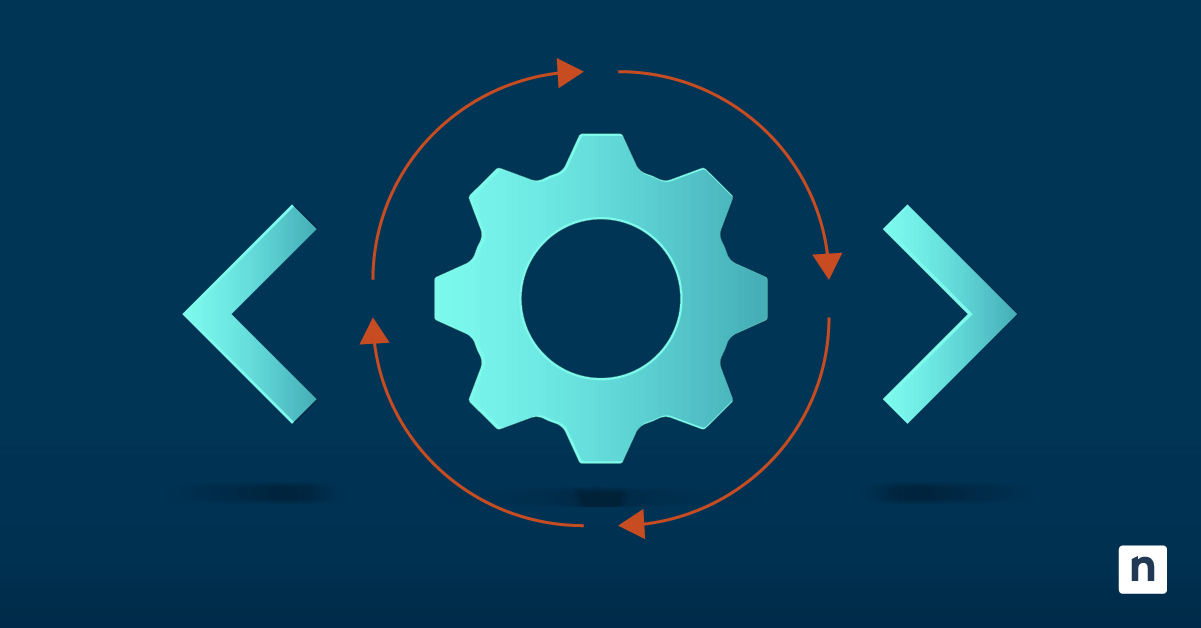Key Points
- What is automated patch management: Software that scans, prioritizes, tests, and deploys patches across devices with minimal IT intervention.
- Why it matters: It reduces downtime, strengthens security, and ensures compliance with regulations such as HIPAA, PCI DSS, and GDPR.
- Manual vs. automated patching: Manual patching is time-consuming and error-prone, while automation ensures timely and consistent updates.
- Types of patches: Security patches, operating system patches, application updates, feature updates, and hotfixes.
- Key benefits: Stronger security, improved productivity, reduced mistakes, simplified reporting, and measurable cost savings.
- NinjaOne Patch Management: A flexible solution that supports both fully automated and semi-automated patch workflows, making it easier to protect every endpoint.
Automated patch management is one of the most important tools IT teams can use to keep systems secure, compliant, and running smoothly. Instead of spending hours manually updating operating systems and applications, automated patch management software allows IT professionals to scan, prioritize, test, and deploy patches across hundreds or thousands of devices with minimal effort.
As organizations adopt more devices and software in hybrid and remote environments, keeping up with patches has become increasingly complex. Without automation, it’s easy for critical updates to be delayed or missed, leaving security gaps and causing unnecessary downtime. By leveraging automation, IT teams can save time, reduce costs, improve compliance, and significantly strengthen security.
What is automated patch management?
Automated patch management uses software to automate the entire patch management process. With automated patch management software, IT teams can scan and deploy necessary patches to devices without manual intervention. By automating patching processes, an IT team will improve patch accuracy while reducing the amount of manual management required throughout the process.
💡For a better understanding, we recommend you check out this guide on the patch management lifecycle.
Importance of automated patch management
Automated patch management helps secure endpoint devices by patching out software vulnerabilities. This proactive approach to patch management can also help IT teams maintain compliance with regulatory requirements and industry standards.
Another vital role of automated patch management is reducing downtime. Unpatched vulnerabilities can lead to device performance suffering or even data breaches. Automation tools also allow technicians to schedule patches so that they are deployed at a convenient time for end-users to avoid interrupting their work.
Why use automated patching?
The long-term benefits of patch management far outweigh the initial resources needed for setup and configuration. By utilizing automation tools, IT teams can significantly reduce the time, effort, and costs of patch management.
This frees up IT professionals to focus on tasks that are more critical or strategic to the business. In addition, automated patch management minimizes the risks – such as a new patch not being deployed on time due to human error – and ensures that patches are distributed consistently.
Compliance and industry use cases
Automated patch management isn’t just about improving IT efficiency. It also plays a critical role in helping organizations meet compliance requirements and industry standards.
Regulations such as HIPAA, PCI DSS, GDPR, and ISO 27001 require businesses to keep systems up to date with the latest security patches. Falling behind on patching can result not only in security risks but also in costly fines, audit failures, or loss of customer trust.
Beyond compliance, some industries depend heavily on automated patching to maintain operations:
- Healthcare: Patient data must remain secure under HIPAA. Automated patching helps healthcare providers protect sensitive records and maintain system uptime for critical applications.
- Financial services: Banks and financial institutions face strict regulatory oversight. Automating patching ensures vulnerabilities are addressed quickly and helps with PCI DSS compliance.
- Government and education: Public sector organizations often operate with limited IT resources. Automated patching reduces the manual workload while keeping essential services online and secure.
- MSPs: Service providers responsible for multiple client environments use automated patch management to scale patching across hundreds or thousands of endpoints with consistency. Read this article on why patch management is important for MSPs for more information.
By addressing both compliance requirements and industry-specific risks, automated patch management ensures that organizations can operate securely, maintain customer trust, and meet regulatory expectations.
Types of patches IT teams manage
Not all patches are the same. IT teams are responsible for managing a wide range of updates across different systems and applications. Understanding the different patch types helps clarify why automation is so important:
- Security patches: Address known vulnerabilities and protect against exploits. These are the most critical and time-sensitive.
- Operating system (OS) patches: Keep Windows, macOS, and Linux devices running reliably and securely.
- Application patches: Update third-party software such as browsers, office suites, and collaboration tools.
- Feature updates: Add new functionality or performance improvements to existing software.
- Hotfixes: Emergency fixes released outside of regular update cycles to resolve urgent problems.
With so many patch types released on varying schedules, relying on manual methods almost guarantees delays or missed updates. Automated patch management software like NinjaOne centralizes these updates, making it easier to deploy the right patches at the right time.
How does automated patch management work?
Automated patch management utilizes automation tools that identify, download, deploy, and schedule patches for all devices in an organization’s IT environment. The process typically involves scanning systems for missing patches, prioritizing updates based on severity, testing patches in a controlled environment, and deploying them automatically. Continuous monitoring and reporting help ensure the effectiveness of the process and compliance with security standards.
Boost your IT efficiency and security by simplifying your patch management process
→ Learn how to automate patch management
Manual patching vs. automatic patching
Manual patching can provide a high level of control; however, it can also be time-consuming and labor-intensive, especially for organizations with large and diverse IT infrastructures. With manual patching, the risk of missed patches or incorrect configurations due to human error is high which can leave endpoint devices vulnerable to performance or security threats.
Automation allows users to identify, schedule, download, and deploy software or OS updates. Automated patching ensures that updates and patches are consistently distributed to endpoint devices, reducing the risk of security vulnerabilities and improving OS and software performance. It reduces the need for routine maintenance and improves productivity.
💡In some cases, organizations choose a semi-automated approach. This hybrid model automates scanning and patch identification but leaves patch approval or deployment steps to IT staff. It can be useful in highly regulated environments or when mission-critical applications require additional testing before rollout.
Comparison: Manual vs. semi-automated vs. automated patch management
| Approach | Pros | Cons | Best For |
| Manual patching | Maximum control over every update.
Useful in small environments. |
Very time-consuming.
High risk of human error. Difficult to scale. |
Small teams, isolated systems, or unique legacy apps. |
| Semi-automated | Automates scanning & reporting.
IT staff retains final approval. |
Slower than full automation.
Still requires manual oversight. |
Regulated industries, mission-critical systems needing strict testing. |
| Automated patching | Fast, scalable, and consistent.
Reduces errors and IT workload. Enables compliance reporting. |
Requires upfront configuration and monitoring.
Poor tools may lack flexibility. |
Organizations managing large, diverse, or hybrid IT environments. |
NinjaOne Patch Management supports both automated and semi-automated workflows, giving IT teams flexibility to fully automate patches where possible while retaining control for critical systems when needed.
What are the challenges of automated patch management?
Increasing number of patches
Patch management is easy to fall behind in, due to the sheer number of patches coming out. Every year, thousands of common vulnerability and exposure (CVE) reports are issued, and IT teams have to react quickly to apply the patches.
Device and system updates
In addition to patching potential security vulnerabilities, IT teams also have to keep software, operating systems, and devices up to date and properly configured to ensure top performance. This is one step of the patch management process that can be automated to improve efficiency.
Outdated IT inventory management
Staying up to date on IT inventory management has always been a challenge, especially now as organizations transition to remote and hybrid workforces. Managing your IT asset inventory allows you to get a clear picture of how many endpoints you have and how many of them require patching.
💡 Expert tip: We’ve written a guide on the top patch management challenges here.
What are the challenges of automated patch management?
-
Increasing number of patches
Patch management is easy to fall behind in, due to the sheer number of patches coming out. Every year, thousands of common vulnerability and exposure (CVE) reports are issued, and IT teams have to react quickly to apply the patches.
-
Device and system updates
In addition to patching potential security vulnerabilities, IT teams also have to keep software, operating systems, and devices up to date and properly configured to ensure top performance. This is one step of the patch management process that can be automated to improve efficiency.
-
Outdated IT inventory management
Staying up to date on IT inventory management has always been a challenge, especially now as organizations transition to remote and hybrid workforces. Managing your IT asset inventory allows you to get a clear picture of how many endpoints you have and how many of them require patching.
What are the benefits of automated patch management?
We’ve written a dedicated article on why automated patch management is critical for modern IT operations, but as a recap:
Strengthen security
The main reason why organizations implement an automated patch management system is to strengthen security. Many organizations put off patching since it can be complex and time-consuming, but doing so can have serious consequences. You can read more about the dangers of ineffective or unplanned patch management in our IT horror stories.
Boost productivity
Instead of spending time and energy on patching, IT professionals can use automated patch management software to take the work off their hands. After automating patching processes, an IT team can focus its time and energy on other critical projects, thus boosting its productivity and effort.
Reduce mistakes
Even the most talented IT professionals make mistakes on occasion. Since automated patch management software does not rely on human input, it reduces manual errors that often occur when patching. Some examples of manual patching errors are skipping patching a system, missing a failed update notification from a patched system, and pushing a wrong version of the software update. Automated patch management systems reduce such errors and allow you to schedule patching whenever you need it.
Simplify reporting
More organizations are turning to automated patch management solutions in order to follow security and compliance standards. Automated patch management simplifies patch reporting for compliance audits and ensures that necessary patches are deployed for security standards.
→ Try NinjaOne for free and see how much time, effort, and costs you can save with powerful automated patch management
Get started with automated patch management
Automated patch management is something all organizations should consider implementing to achieve higher levels of security compliance and improve the productivity of their employees. At a time when organizations are under more and more pressure from cyber threats, patch management is an important part of cybersecurity hygiene that modern IT departments must contend with.
NinjaOne utilizes the power of its built-in RMM to automate patching with high levels of granularity. Sign up for a free demo today and start automating your patch management process.
How can you automate patch management for mobile devices?
Mobile Device Management (MDM) software allows IT administrators to automate the patch management process of a business’ mobile fleet, regardless of whether the devices are corporate-issued or bring-your-own-device (BYOD). MDM software can enforce update policies, schedule automatic patch deployments, and monitor the patch status of all enrolled devices. This ensures that any mobile devices with access to corporate resources remain secure and compliant with organizational policies by regularly applying necessary updates and patches.
Make automated patch management a priority
Patching is one of the most important parts of IT hygiene, but manually managing it can become inefficient. The number of devices, applications, and vulnerabilities most organizations deal with makes automation the only practical way to stay secure and compliant.
Automated patch management takes care of the repetitive work, such as scanning for updates, testing, deployment, and reporting, so IT teams can focus on more strategic projects. It improves security, reduces downtime, ensures compliance, and helps avoid costly breaches caused by missed or delayed patches.
NinjaOne Patch Management gives IT teams an easy way to deploy updates across endpoints, enforce compliance policies, and reduce the workload that comes with manual patching.







